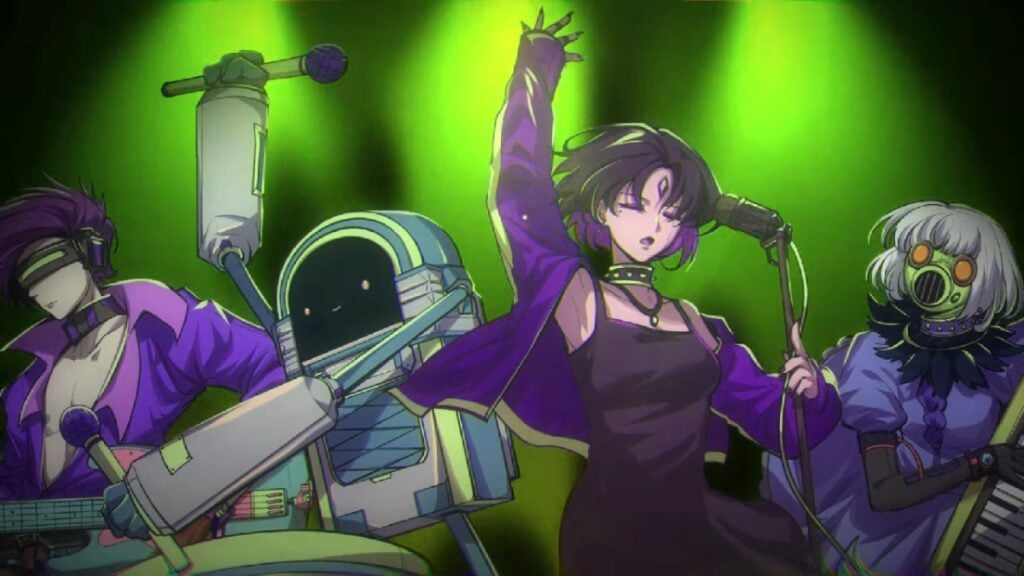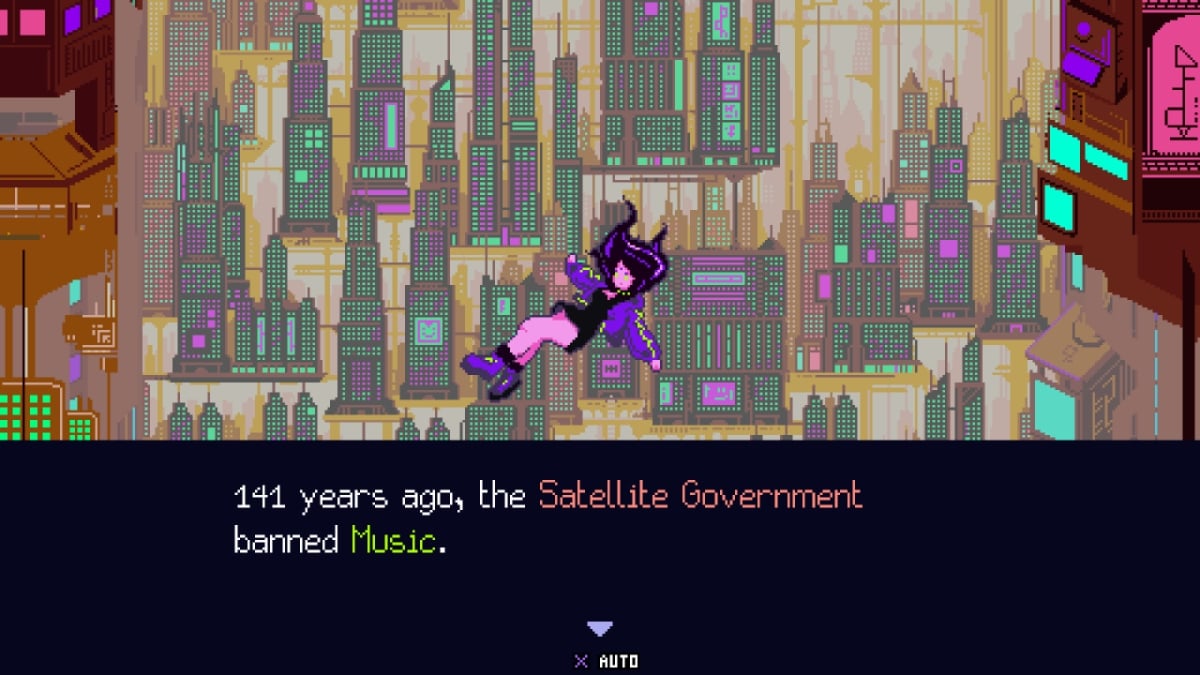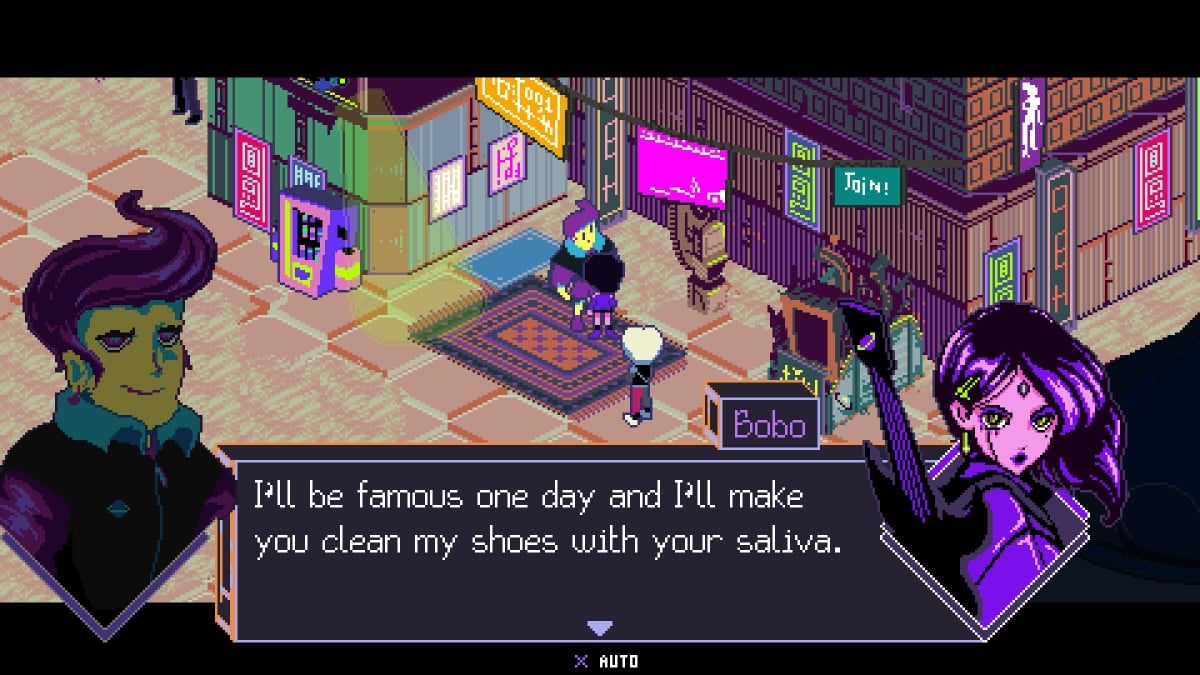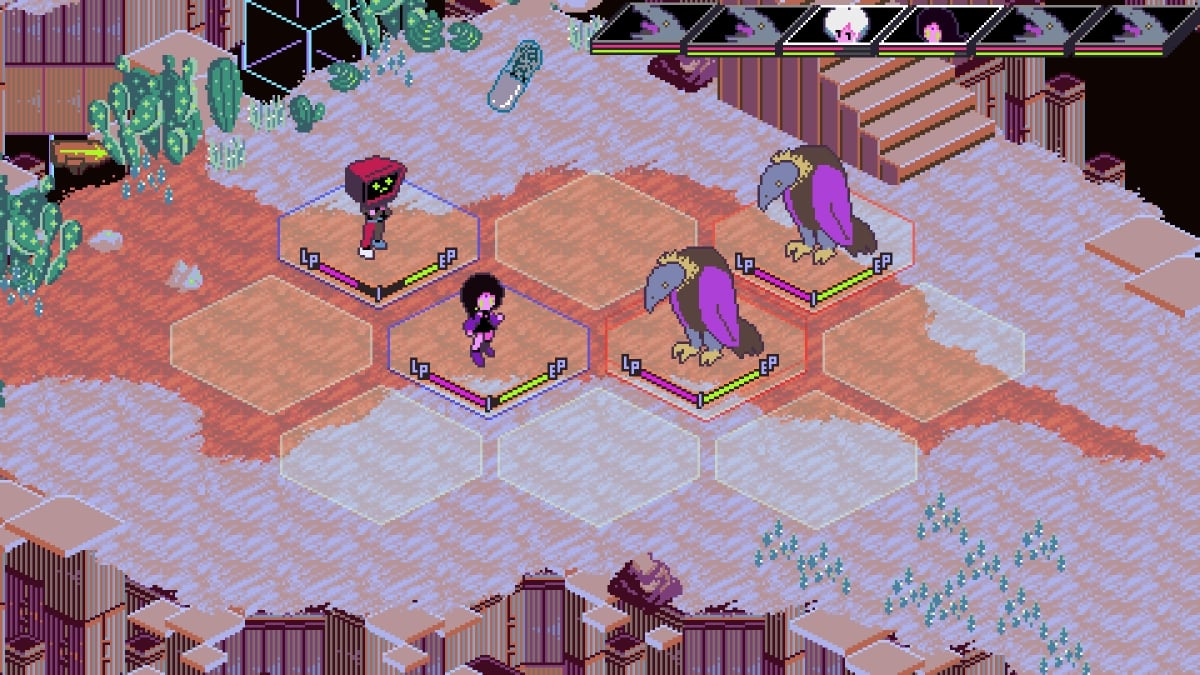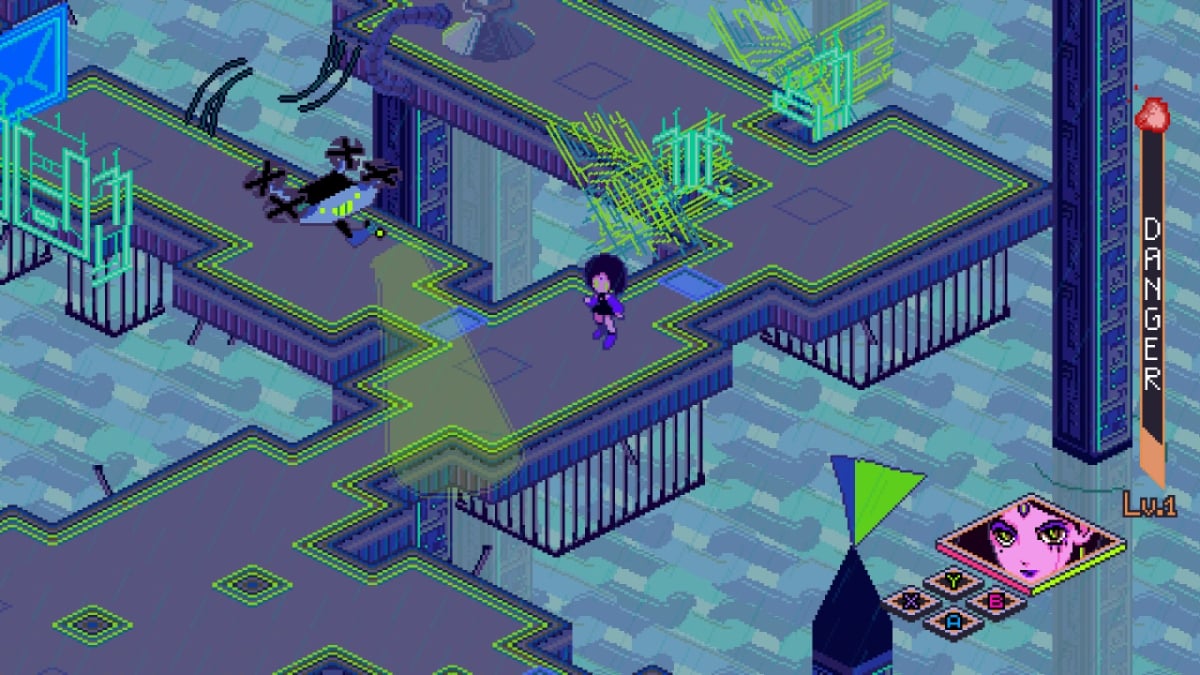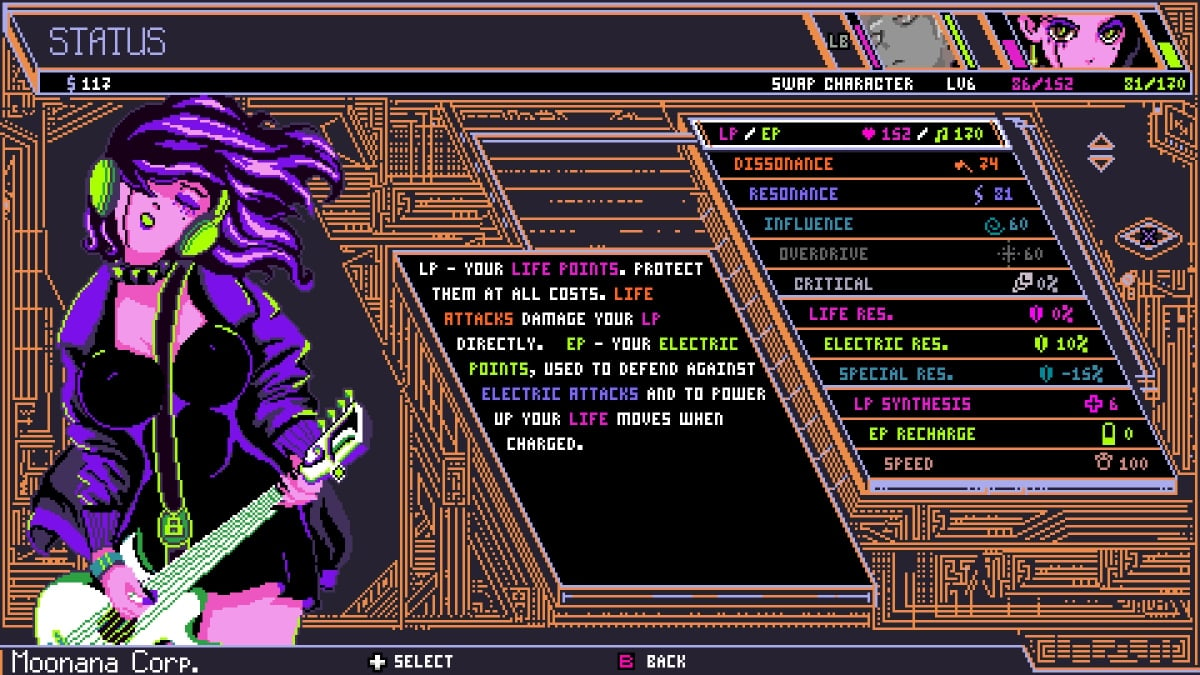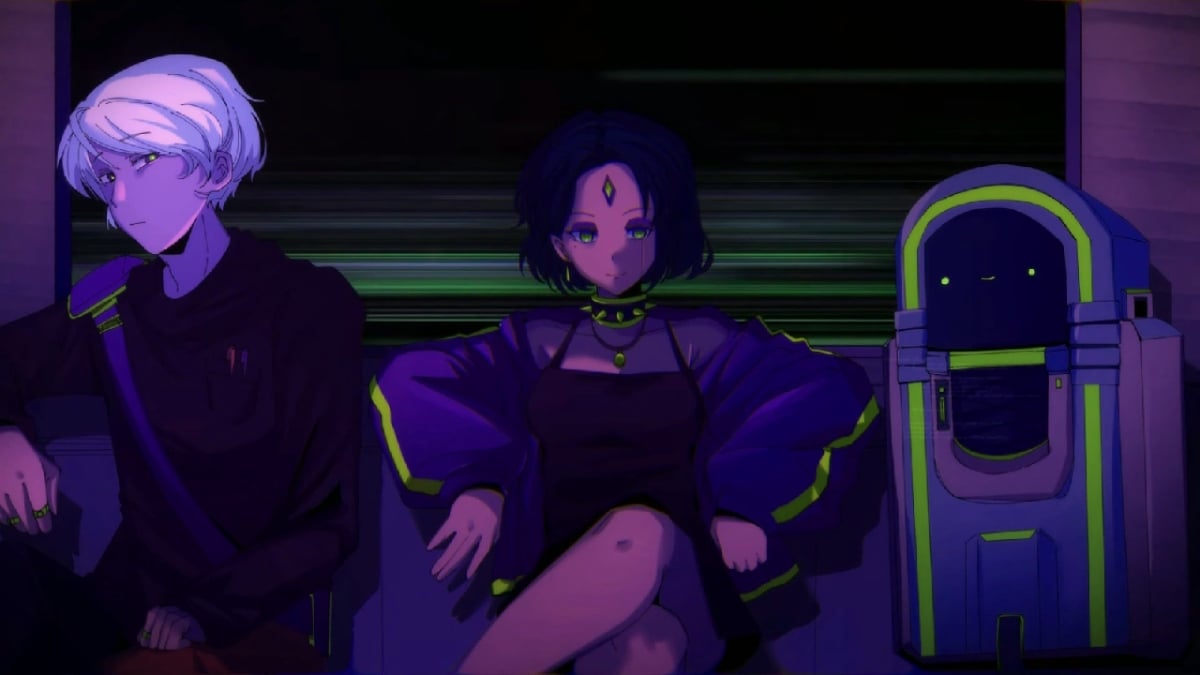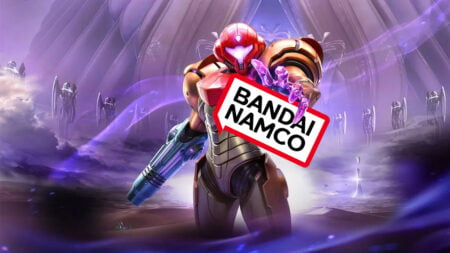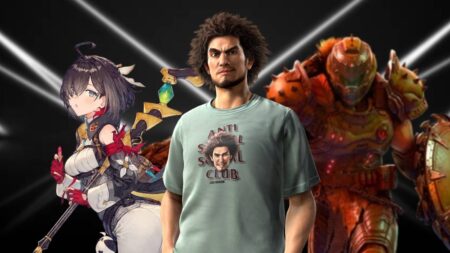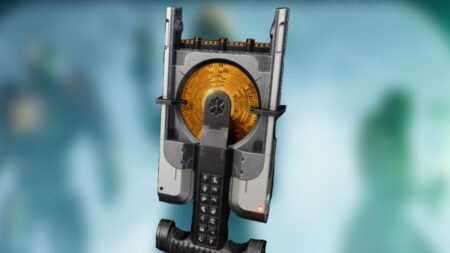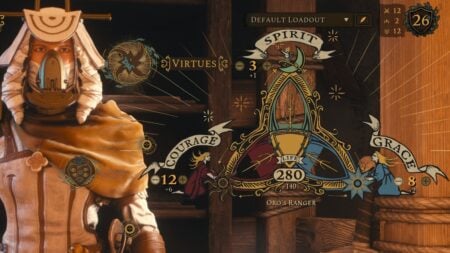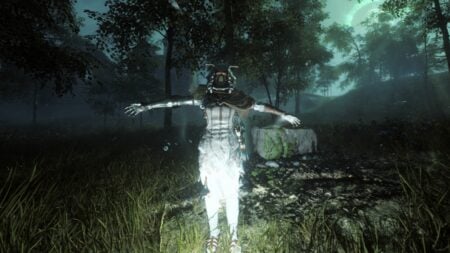Skip To...
Fast-paced turn-based Goth girl cyberpunk JRPG with Neon Goth rock music and anime characters sounds like a handful. It is. But the developers perfectly summed that up with a laconic title: Keylocker. That title is a mighty understatement because Keylocker is many games rolled into one small but amazing package that never stops entertaining you just when you thought it ran out of air from its last chorus.
What’s even more amazing is that it’s an indie title made by a small studio– and with how often the game’s creator pops up on the opening credits, you just know that they poured their soul into this game. Their soul turned out to be pretty and pretty cool.
Rock is for Revolution
In Keylocker you’re Bobo, a rockstar goth girl in the aforementioned cyberpunk world. This time the cyberpunk setting has its own different flavor. Mankind has gone as far as Saturn and a techno-religious authority that controls that government has monopolized electricity– basically everyone’s means to live.
It just so happens that music produces electricity in this game world, and authorities don’t want musicians and rockstars producing cheap and affordable electricity for people. So they banned music and threw singers and songwriters in prison. For Bobo, this is a normal day as she refuses to let music stay outlawed, at the cost of being branded as a criminal.
So your main goal is to form a band that will rock the very foundations of the world you live in, challenging the status quo and giving literal (electric) power back to the people.
Thus, Keylocker‘s plot is first and foremost, a rebellion and revolution story where you turn Bobo from a bumbling anarchist punk into a household revolutionary icon while toppling the government and corporations along the way and hopefully ending the dystopia. She does this through concerts while bludgeoning the oppressive authorities with her electric guitar.
As far as cyberpunk stories and settings go, it’s a refreshing tonal shift since it’s more cheeky, less hopeless, and is actually optimistic. But what really convinced me to keep playing was the music and the game’s original soundtrack. It became one of my main motivations.
And They Say Rock-and-Roll is Dead…
This is a game partly about music and rhythms and it at least has to have a decent soundtrack. Keylocker went above and beyond. Its neon goth alt-rock is spiritually energizing, angsty, and can put you in a trance — maybe even convince you to perform sedition and commit tax fraud because “f” the government and megacorporations, but calm down, alright? At least finish this review and the game first.
I can at least confidently say that I liked Keylocker‘s music better than I did Cyberpunk 2077‘s screamo rock. It’s classier and feels more consistent with a cyberpunk setting and the struggles of its fictional denizens. Keylocker‘s music evokes this without even conveying lyrics, which is amazing if you think about it.
In fact, I might even play Keylocker‘s soundtrack over any cyberpunk game I play now. That’s how good and memorable it is. You’ll be anticipating the next big game sequence in Keylocker because they reserved those awesome soundtrack bits in pivotal moments such as boss fights and major story events.
All in all, this kind of music in a game doesn’t just build up an atmosphere, it also tells a story and builds a whole world. It complements the gameplay in a way that makes the turn-based format feel more hectic or intense. Speaking of which…
Turn-Based Yet Fast-Paced
Keylocker is already an expert in setting itself apart in such a crowded medium, and this expertise and uniqueness also extend well into how it implemented its turn-based combat. The game has a parry system where you have to rhythmically press a button to negate enemy damage.
This allows for additional playstyles and lets you go full glass cannon with a high-risk, and high-reward gameplay. At times, your interactions with enemies can even feel more intense compared to real-time action games since messing up a parry can make you lose– even on the lowest difficulty.
This approach can be a double-edged sword. On the one hand, combat is never boring, you’re always mindful of your positioning on the hex grid. On the other hand, this is not your game if you play turn-based games to maybe relax a bit, thinking they require less attention than real-time action games. Your mileage may vary.
For me, it took me a while to adapt to this turn-based approach, thinking I could relax during the enemy’s turn. However, the only real time you can feel safe during the turn-based combat in Keylocker is before you end your turns.
High Notes and Low Notes in Gameplay
The game doesn’t limit itself to just turn-based combat, of course. There’s a sizable open-area exploration similar to Stardew Valley (except dystopian) and some important story sequences will set you up with a Guitar Hero mini-game while other moments involve a rhythm-based vehicular chase.
There are also side quests, secret hunting, exploration, and other mini-games cleverly interwoven into the story and the world. It’s hard to run out of stuff to do in Keylocker. Even the interior of random trailers have their own story bits and everyone has a text dialog if you talk to them, lending much to the world-building.
There’s also a stealth system in place for when your wanted level gets too high. Remember, your character Bobo, and basically anyone who tags along with her is a fugitive. If her wanted level gets high enough, you’ll have to evade searchlight drones lest they call down a whole squad of cops. If you defeat them, you can lower your wanted level, thankfully.
It’s an immersive game mechanic, but the stealth leaves much to be desired as the searchlight patterns can feel erratic and some detections can feel awkward or unwarranted. It can also get annoying if you’re just in a hurry to turn in some quest objectives but it doesn’t detract from the overall experience.
It Could Use More Function, Not Just Form
If there’s one thing you can trust to stay consistent on Keylocker, it’s the game’s sense of style. The developers have created a living and breathing caricature of a cyberpunk world here and the aesthetics are top-notch. They don’t feel janky or forced at all, unlike in other indie games or even in AAA games.
The writing is also memorable, with a contemporary and futuristic twist that’s still interspersed with profundity and existentialist themes at times.
I would, however, have preferred a better refinement of some of the game’s basic elements such as the user interface. As it is, the 16-bit game text is an eyesore, especially if you’re comparing stats and are theory-crafting or simply leveling your character. Tutorials are also poorly conveyed. I didn’t even know that I could level up my attacks until I curiously fiddled with some options.
Keylocker also has no mouse control upon release, which felt weird. You either use just the keyboard or a controller (recommended).
There’s lots of trial-and-error involved in learning this game’s turn-based combat and its other mechanics. If you’re someone who’s easily overwhelmed, this might not be the most approachable game for you, especially with the added learning curve for the parry system.
It can sometimes feel like in their creative fervor, the developers forgot that they’re creating a game and need better accessibility for the audience. It’s a minor complaint, of course, nothing too big and it’s sometimes a necessary consequence of artistry.
Don’t Stop the Music
Even with its accessibility flaws and some rough mechanics, Keylocker is an easy video game to love. It has its charms everywhere you go in-game and its music will always accompany you even in the most boring moments (and even when it’s not playing).
The story themes are also easy to relate to, it’s practically a power fantasy for younger generations, and the anime-goth-punk aesthetics can easily rival some of the bigger and more expensive anime games and JRPGs in most aspects except graphical fidelity.
More importantly, Keylocker has more soul and energy compared to bigger competitors, the music and story it wants you to hear and witness will stay with you long after you’ve shut the game down. And like its downtrodden protagonist Bobo, hell-bent on fighting bigger and more powerful authorities, Keylocker punches well above its weight class.
Keylocker (PC Reviewed)
Keylocker will entrance you in its music and game world so well, it's easy to forget and forgive some of its minor shortcomings. You might even ask for an encore to this rebellious concert.
The Good
- Immersive cyberpunk game world
- Superb art style
- Music that grabs your soul
- Surprisingly big & detailed
The Bad
- Awkward stealth mechanics
- UI can be hit or miss

